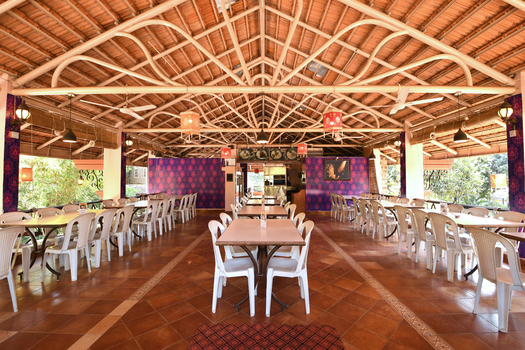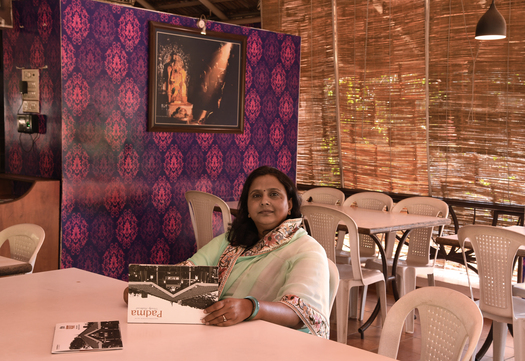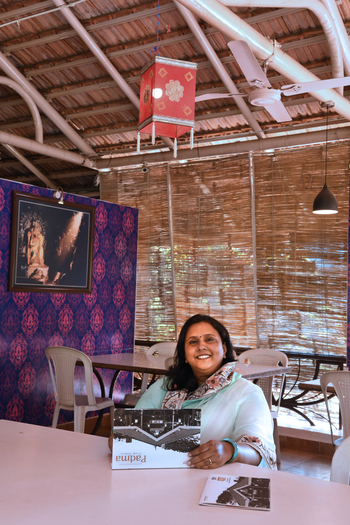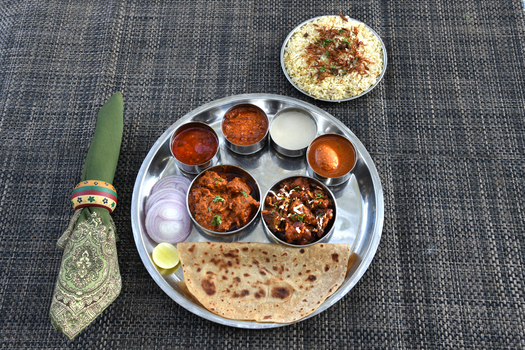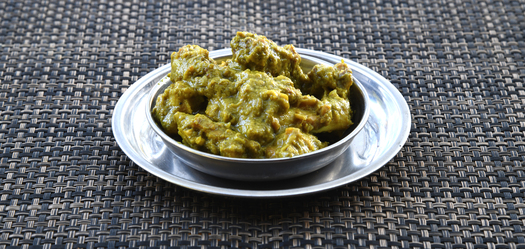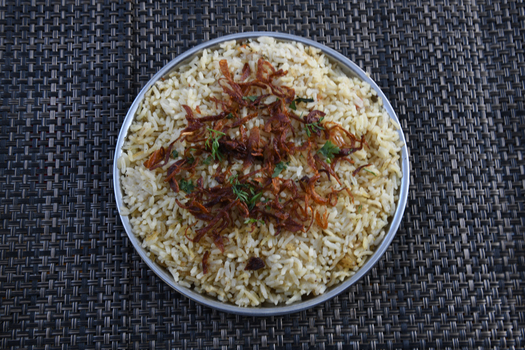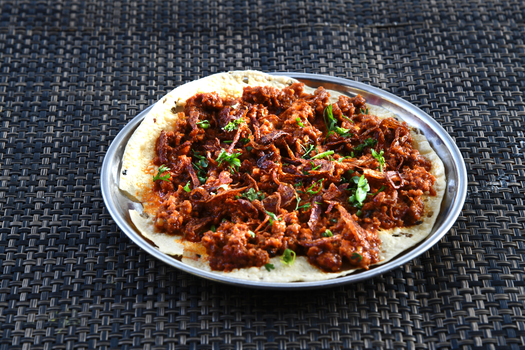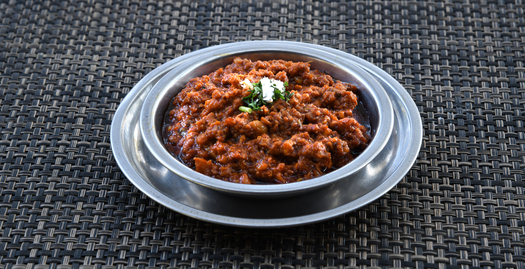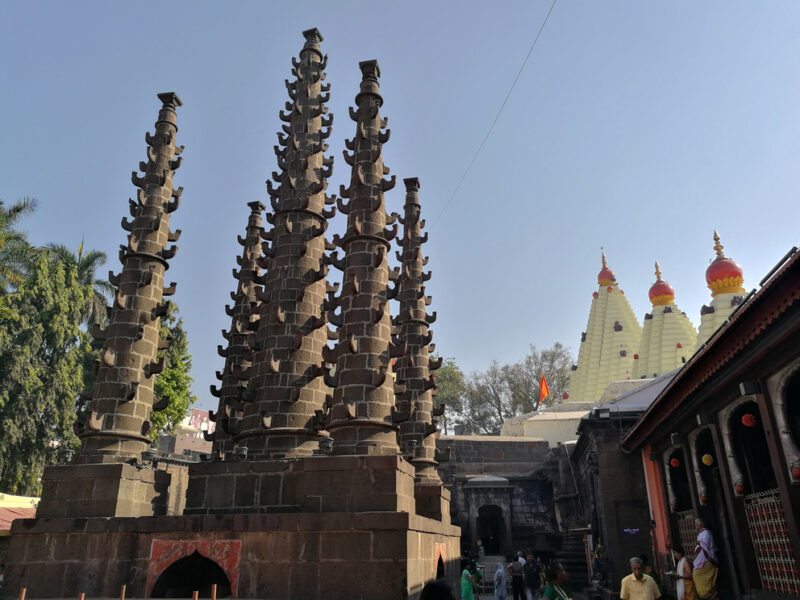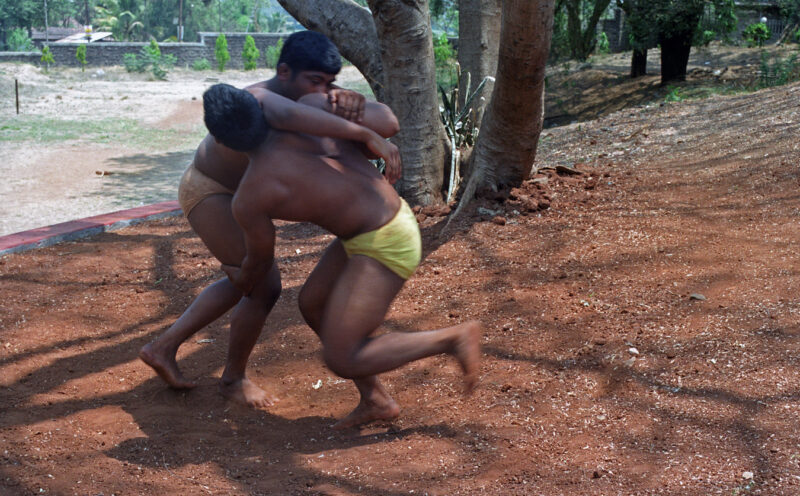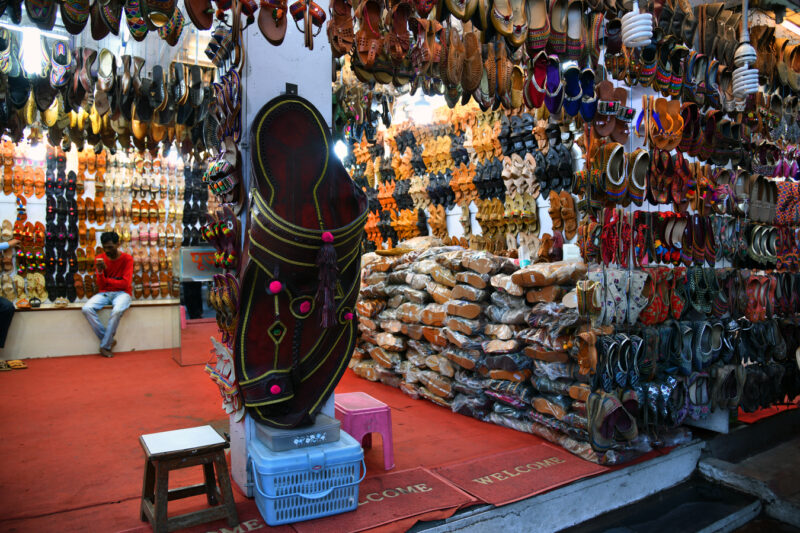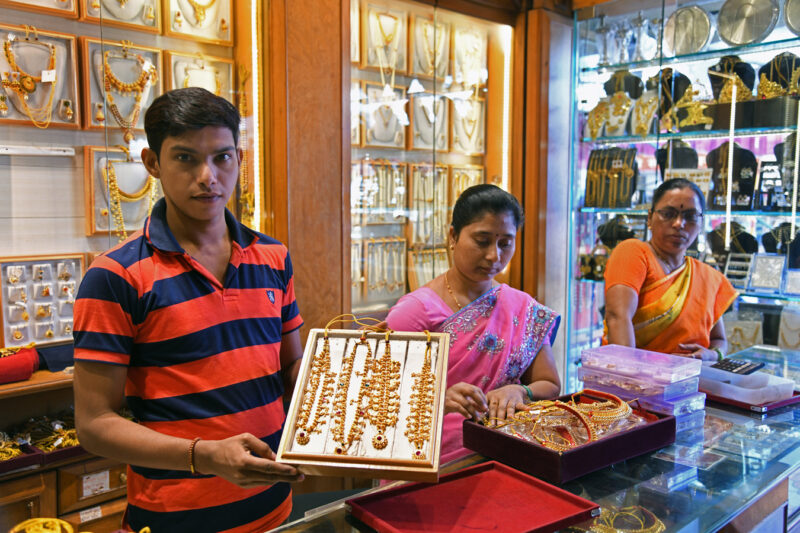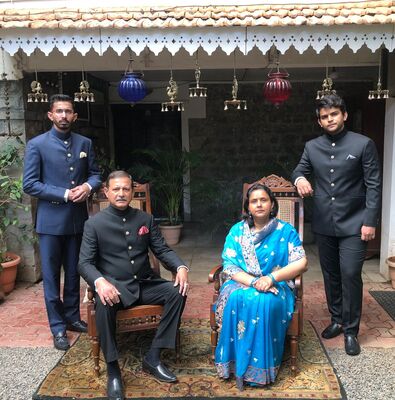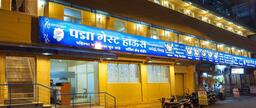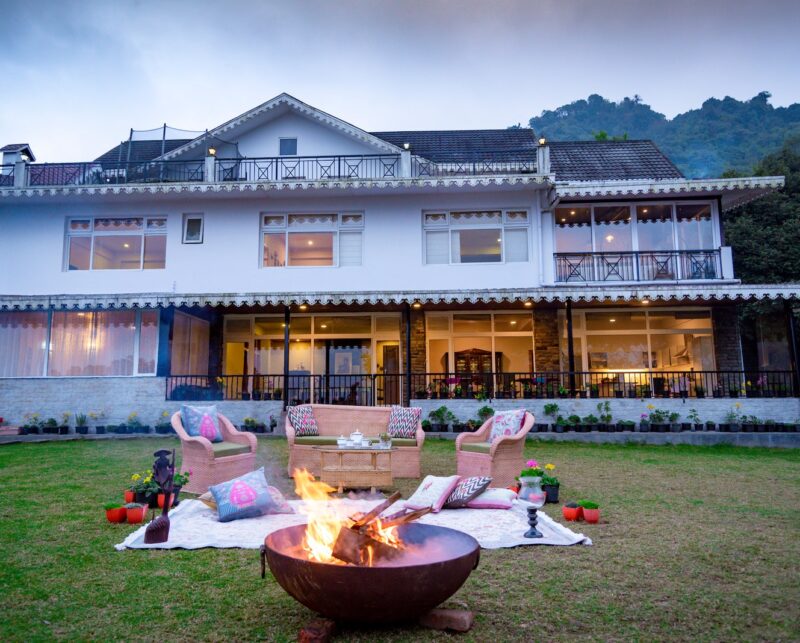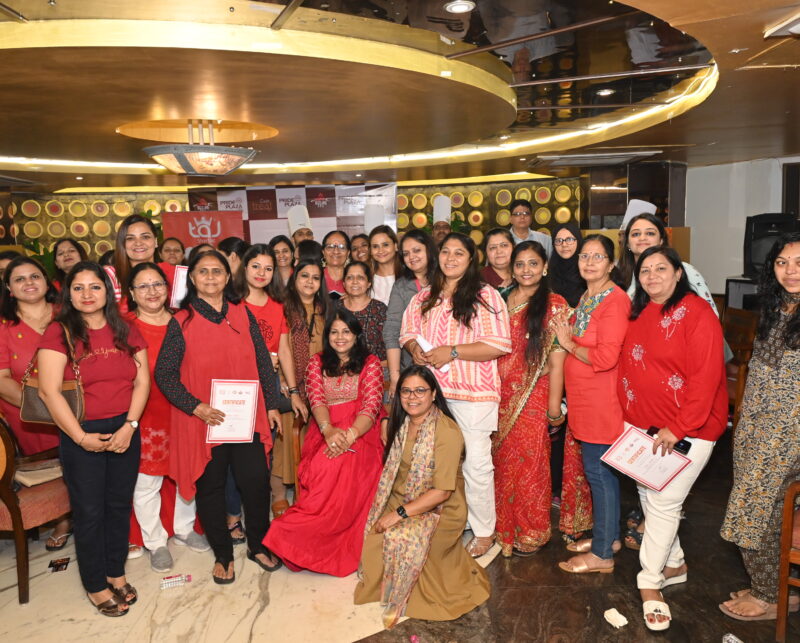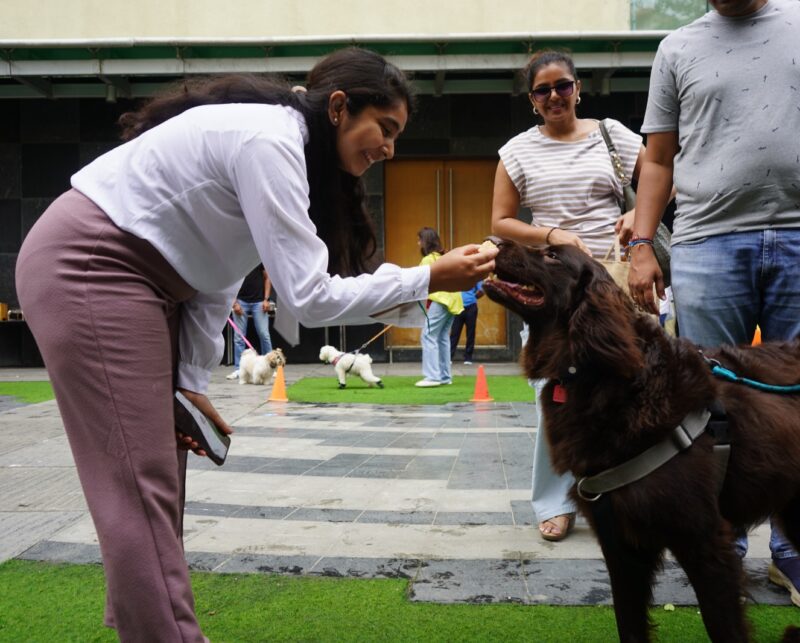Anil Mulchandani
pics Dinesh Shukla
More than 75 years old, Padma Guest House in Kolhapur created a Kolhapuri Thali that helped popularize Kolhapuri cuisine commercially. This eatery launched in the year of India’s independence is not only thriving today but its owners are now taking the cuisine forward.
The story started with the Padma Talkies, which has been screening movies from 1941. The work on opening a cinema theatre started in 1936 when the Late Col. Nanasaheb Dattajirao Ingle, Military Secretary to HH Rajaram Chhatrapati, Maharaj of Kolhapur, called it New Talkies. Inspired by the 1930s Art Deco style of Mumbai’s Metro Cinema of Bombay, the theatre was inaugurated by Lt. Col P Gaisford, British Resident of Kolhapur in 1941 and renamed Padma Talkies after Princess Padmaraje, in 1942, with the consent of the royal family. The present owners Gauri and Ruturaj Ingle say, “it used to show English films and housed a bar. In those days a camp for Polish Jews was created in Valivade on the outskirts of the city, now the Gandhinagar area, and they would come to watch English classics here. The matinee 10 am show slot was fixed exclusively for the Laurel & Hardy movies. The Padma Talkies also catered to the local audiences by showing Marathi and Hindi movies. The 3 pm show was reserved for women and the theatre provided separate seating arrangements for women for all the other shows!’’.
Ruturaj says the Padma Talkies first used a German made Bauer B6 sound and projector from 1941, then went on for the next 70 years with a low-intensity carbon, in 1972 with a high-intensity carbon. “This was then substituted by a Xenon lamp projector in 2009, which was followed by K Sera Sera, a UFO and then by Scrabble 2K. In the olden days to give a 3-D effect for the English film House of Wax, the theatre used two projectors simultaneously to create the effect. The film reels used to be Safety film polyester, followed by polyester Analog Track Stereo, Stereo Track, “he explains. While now digital technologies are used in the theatre, he has created a fascinating museum of projectors and other old equipment, and some cinema memorabilia from the theatre, for interested visitors”.
Near the cinema, Padma Guest House is famous for their historical Kolhapuri thali. The stairway is lined with historical photographs of Kolhapur Princely State, and the restaurant still has old fans, furniture, screens and sepia tinted photographs. Says Gauri Ingle, who currently manages Padma Guest House and Padma Hotel, “The Late Col. Nanasaheb Dattajirao Ingle, who was Military Secretary to the Maharaja of Kolhapur, founded the Padma Talkies in 1941 and the Padma Guest House in 1947, just after India’s independence. Both were named for Princess Padmaraje. In the 1950s, Padma Guest House started serving Kolhapuri food – a curated combination of Kolhapur’s most famous main and side dishes, which is now served in many restaurants in India as Kolhapuri Thali. My father-in-law, Dhairyasheelrao Ingle, continued the work of his father Nanasaheb in managing the two establishments’’, says Gauri Ingle.
Goat meat is the most preferred food of Kolhapur, and mutton dishes feature prominently on a thali though now chicken is also becoming popular. Being close to the Konkan coastal region, fish and seafood like prawns or clams are also consumed.
The popular components of a Kolhapuri thali are Tambda Rassa or red curry which is a thin gravy made with mutton stock and tomato puree seasoned with coriander, ginger, cumin and red chillies, Pandhra Rassa which is a white gravy with mutton stock eaten in alternation with the hotter Tambda Rassa, Kolhapuri Thecha, a mutton pickle called Lonche, and acccompaniments like rotis, papad, kachumber salad. Gauri, elaborates, “we are known for our thalis – Rassa Mutton Thali, Rakti Mundi Thali, Veg Special Thali, Chicken and Mutton Thali, etc, but also have a la carte. The Mutton Lonche a dish of pickled dry mutton, is one of our signatures – many travelers get our Mutton Lonche and Veg Vindaloo packed to carry for onward journeys, and there is a Kolhapur Diaspora that takes these pickled dishes with them when they go back abroad because they stay long and can be mixed with regular dishes to get the fiery flavor of Kolhapuri cuisine’’.
In August 2001, Gauri and Ruturaj Ingle decided to start a branch of Padma in the Tarabai Park area of Kolhapur. The tagline of both the Padma restaurants is Proudly Traditional. “There are many old timers who still go to Padma Guest House, even though Padma Hotel has the same menu. The people living in the new upscale areas of Kolhapur and tourists or business visitors to Kolhapur are the main clients for Padma Hotel’’, says Gauri, “since I am from Gwalior, I have added the Gwalior style Puran Poli Thali to the repertoire – this is an attraction for residents of Kolhapur as they get their veg comfort food in a slightly different version. My sons, Aaryamaan and Shatrunjai, have both studied hospitality management at Lavasa. They have started Epicure Catering that is offering on-site catering of r oyal cuisines of Kolhapur, Baroda, Gwalior and other Maratha princely states, as also national and international cuisine’’, says Gauri.
Her sons, Shaturnjai and Aaryamaan continue to the family’s hospitality legacy with a catering company and Ekant, a collection of three unique holiday homes in the countryside around Kolhapur.
Kolhapur Must-Haves
- Kolhapuri mutton at Dehati
- A meal at Padma Guest House for a taste of history.
- Misal at Khasbaug Misal (located near the wrestling stadium from 1945). Bawade Misal (since 1923), Chorage, Phadtare and Aahar Misal.
- Gulmohar, Krushna Dining and Parakh Hotel for regional food.
- Mahadev Prasad for rassas.
- Fish at Vaman.
- Bhel at Rajabhau, Rajkamal, Milee and
- Kat Wada at Ambika and Patlacha Wada
- Kandi Peda.
Kolhapur Must-buy
- Jaggery, specially the Radhanagari gur.
- Kolhapuri footwear
- Jewellery and Saree, some of the good places are near the Mahalaxmi Temple.
Kolhapur Must-See
Kolhapur has a fascinating history that dates back to the 10th century when it was ruled by a Yadav dynasty. The Bhonsle dynasty ruled Kolhapur Maratha Kingdom from 1710 to 1949, and many heritage buildings were erected in this period in this city. Rajaram II, who ruled from 1866 to 1870 AD, began the modernization of Kolhapur but died aged 20 in Florence, Italy and was cremated on the banks of the Arno River by special permission granted by the Italian Council of Ministers. He was succeeded for a brief time by Shivaji IV, after which Chhatrapati Shahu Maharaj, the Maharaja of Kolhapur who was a philanthropist and a reformer took the princely state to its zenith. Chhatrapati Shahu Maharaj, introduced wide-ranging social reforms, built the industrial base of the city, and patronized art and culture.
Jyotiba Phule, the social reformer, who fought for the eradication of untouchability and the caste system, women’s emancipation and girl child education in India. If you visit Kolhapur you cannot escape picking up on Shahu Maharaj’s pioneering initiatives in constructing different educational institutions which included a boarding school for socially challenged students and Vedic schools. Back then, he made primary education free and compulsory for all in his state. He also started schools to train village administrators.
Opposed to the caste system, he removed Brahmins from the post of Royal Religious advisers, when they refused to perform religious rites for non-Brahmins. He ensured the untouchables equal access to public utilities, and discontinued the hereditary transfer of titles and tenures of revenue collectors who exploited or enslaved people. He also championed the cause of girl child education, took action against exploitation of women, legalized widow remarriage and discouraged child marriage.
He also began the economic progress of Kolhapur by building the Shahu Chhatrapati Spinning and Weaving Mill in 1906, establishing banking facilities and co-operative societies for farmers, and laying the foundations of the Radhanagari Dam. The Marathi Film Industry also grew in Kolhapur from 1917. Because of his vision and his multiple initiatives for social reform, he was given the title of Rajarshi Shahu.
During his reign, several historic buildings were erected in Kolhapur.
- The New Palace by Rajarshi Shahu was designed by Charles Mant in his signature eclectic style featuring Hindu, Islamic and European architectural styles. The Indo-Gothic stone building is dominated by the huge domes, turrets and Victorian-style clock tower. Part of the palace has been opened for visitors as the Chattrapati Shahu Museum which offers an insight into the life of the Maharajas of Kolhapur, who were entitled to 19 gun salutes on all formal occasions (only five princely states were given the full 21 gun salute and six including Kolhapur were entitled to 19 gun salutes) and led a flamboyant lifestyle.
- The Town Hall was also developed at Kolhapur by the architect Major Charles Mant under the auspices of the Maharajas between 1872 and 1876.
- The old palace where audiences were held is the Bhavani Mandap, in the heart of the city of Kolhapur. Though once a palace and pavilion for the princely courts, it is now most visited for the Bhavani Mata Temple.
- The Shri Mahalakshmi Temple is the sacred centre of Kolhapur attracting religious tourists in large numbers. The temple is said to date from the 7th century and to have been rebuilt after an earthquake in the 8th century, but most of the present structure was built in the 18th The cream-coloured spired towers over the sanctuary is its dominant feature. The architectural style and layout is similar to those of Chalukyan temples with a porch and an assembly hall leading to the sanctum.
- Khasbag Maidan is a wrestling stadium built around 1912 which has a seating arrangement for about 30,000 people around the Houd, the wrestling ring. The 46th Hind Kesari wrestling championship was held here to mark its centenary. You can watch wrestlers sparring here or at the Motibagh Talim Kendra. The royal family of Kolhapur patronised sports, arts, music and dance, and the wresting tradition of Kolhapur was also promoted by Shahu Maharaj.
- Panhala is a locally-popular hill station with an impressive fort. This fort has close associations with Maratha heroes like Shivaji and Tarabhai.



